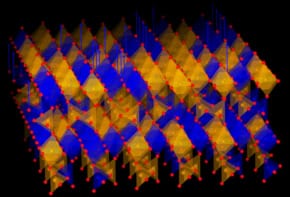
“The most crucial result of this work is the correlation between form and function in supercapacitor materials,” states first author Dina Ibrahim Abouelamaiem. She elaborates that “our research is driven by the need for a greener future and improved energy systems”, which is why their Sustainable Energy Fuels paper focuses on understanding how the 3D structure affects the supercapacitor properties of biocarbon-based materials derived from plant cellulose. These materials could provide an environmentally-friendly alternative to precious metals and toxic chemicals currently used in top-performing supercapacitors.
Powering the future
Supercapacitors are devices full of potential, often quite literally, as they are charged to exhibit high power densities and long lifetimes. Due to these properties, supercapacitors are able to bridge the gap in device performance between batteries and fuel cells. Understanding the nanostructure in depth and over multiple length scales is paramount to optimize performance and design better devices. By combining an extensive set of complementary techniques, Ibrahim and her colleagues have shed light on the complex synergy between structure and performance, and show what electrode materials really need a hierarchical porous network to function most effectively.
In their study, biocarbon electrodes activated using potassium hydroxide act as a model system, and the findings are also tested against commercial materials to demonstrate wider applicability. To form a complete picture of the materials the researchers exploited a range of characterization methodologies, such as SEM (scanning electron microscopy), BET (Brunauer-Emmett-Teller theory for nitrogen adsorption), XPS (X-ray photoelectron spectroscopy), and X-ray CT (X-ray computed tomography). This long list of techniques (and associated large number of acronyms) covers a wide range of length scales, which means the researchers were able to analyse nano-, micro-, meso- and macro-pores altogether.
According to Ibrahim, it was the large suite of techniques available from the Electrochemical Innovation Lab (EIL), which is located in UCL’s Department of Chemical Engineering, that allowed the researchers to plug the gap in understanding structure function relationships in supercapacitor devices.

Within the pores of a supercapacitor
Results show that an increase in performance of materials is seen with a mixture of pore sizes nestled within one another, forming a hierarchical structure. The measurements reveal a direct correlation between high specific surface area and low cell resistance, which leads to a high specific capacitance. The team tested the performance of the supercapacitors using varied electrochemical set-ups and over extended operating cycles to demonstrate the lifetime performance and stability of the materials. These findings set the scene for more efficient and higher performing energy storage devices in the near future.
Full details of the research are reported in issue 4 of Sustainable Energy Fuels 10.1039/C7SE00519A.



